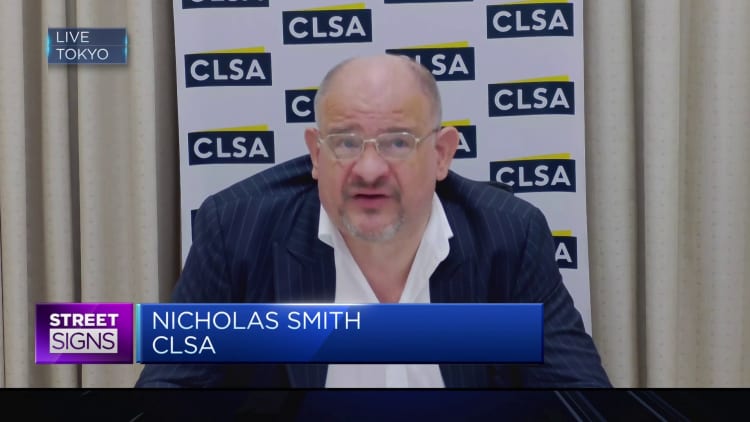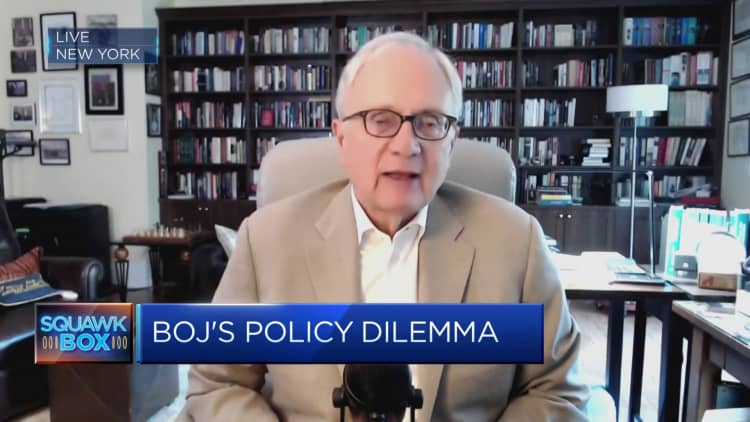
Photographic illustration of undated Japanese yen and dollar banknotes.
Luminous Images | Luminous Images | Getty Images
this yen It fell to levels not seen in 34 years against the dollar on Monday before rebounding and heading for its best week in more than a year. This is what happened.
On Monday, the yen hit 160.03 against the dollar for the first time since 1990, but later in the day the yen rose to the 156 level amid speculation that Japanese authorities would intervene.
Some market analysts believe that the RMB exchange rate rose more than 2% against the US dollar on Wednesday, approaching 153, which may also be caused by intervention.
Japanese authorities have yet to issue an official statement confirming their role in supporting the yen.
“The government has been refusing to say whether they intervened, but I don’t think a lot of people have any doubts,” Nicholas Smith, Japan strategist at CLSA, told CNBC.
The current exchange rate of yen to dollar is 152.90.

Bank of America Global Research analysts said the first suspected intervention could be worth between 5 trillion and 6 trillion yen ($32.7 billion to $39.2 billion), based on Bank of Japan data.
Bank of America Research also said the second possible intervention could be smaller in scale than the first.
line in sand
As of Monday’s low, the yen had fallen 7.3%. The Bank of Japan held a historic meeting in March, ending the world’s only negative interest rate regime.
But the first suspected intervention came after the currency hit 160 against the dollar.
The continued strength of the U.S. dollar also hit the yen as expectations of an early interest rate cut by the Federal Reserve weakened. Recent U.S. inflation data have been higher than expected, highlighting the difficulties the Federal Reserve faces in dealing with stubborn inflation.
Over the past few decades, while other central banks around the world have tightened policy, Japan has maintained ultra-loose policies, leading to a concentration of yen carry trades.
The carry trade is a strategy in which traders borrow money from a low-interest-rate currency such as the Japanese yen and invest in higher-yielding assets in another currency, thereby profiting from the interest rate differential.
What’s next?
The Bank of Japan kept its benchmark policy rate unchanged at 0%-0.1% at its most recent monetary policy meeting on April 26. Bank of Japan Governor Kazuo Ueda acknowledged the yen’s volatility at a press conference later in the day. While he assured markets that authorities were paying attention, he stopped short of highlighting any practical steps that might be taken to combat the volatility.
Market participants believe Japanese authorities will intervene further to support the currency.
“I think the Bank of Japan may be forced to continue to intervene,” Edward Yardeni, president and chief investment strategist at Yardeni Research, told CNBC. “I think it’s still going to be a problem for Japan, Rather than having any significant global impact.”

HSBC said the weak yen plays a key role in “reflation” of the economy, which is what the Bank of Japan expects to achieve this year.
“After years of losing competitiveness, exporters are finally feeling the boost from currency adjustments. And one might suspect that a weaker exchange rate, and for a longer period of time, may be needed to turn this boost into a lasting one. manufacturing renaissance,” Frederic Neumann, chief Asia economist at HSBC, wrote in a client note.
Neumann said the depreciation of the yen is boosting Japan’s service industry through tourism, which in turn will help increase inflation expectations.
“In other words, as long as yen depreciation is orderly, a weaker yen is not entirely unwelcome. So don’t expect the Bank of Japan to rush into aggressive tightening simply because of currency fluctuations,” Neumann added.





